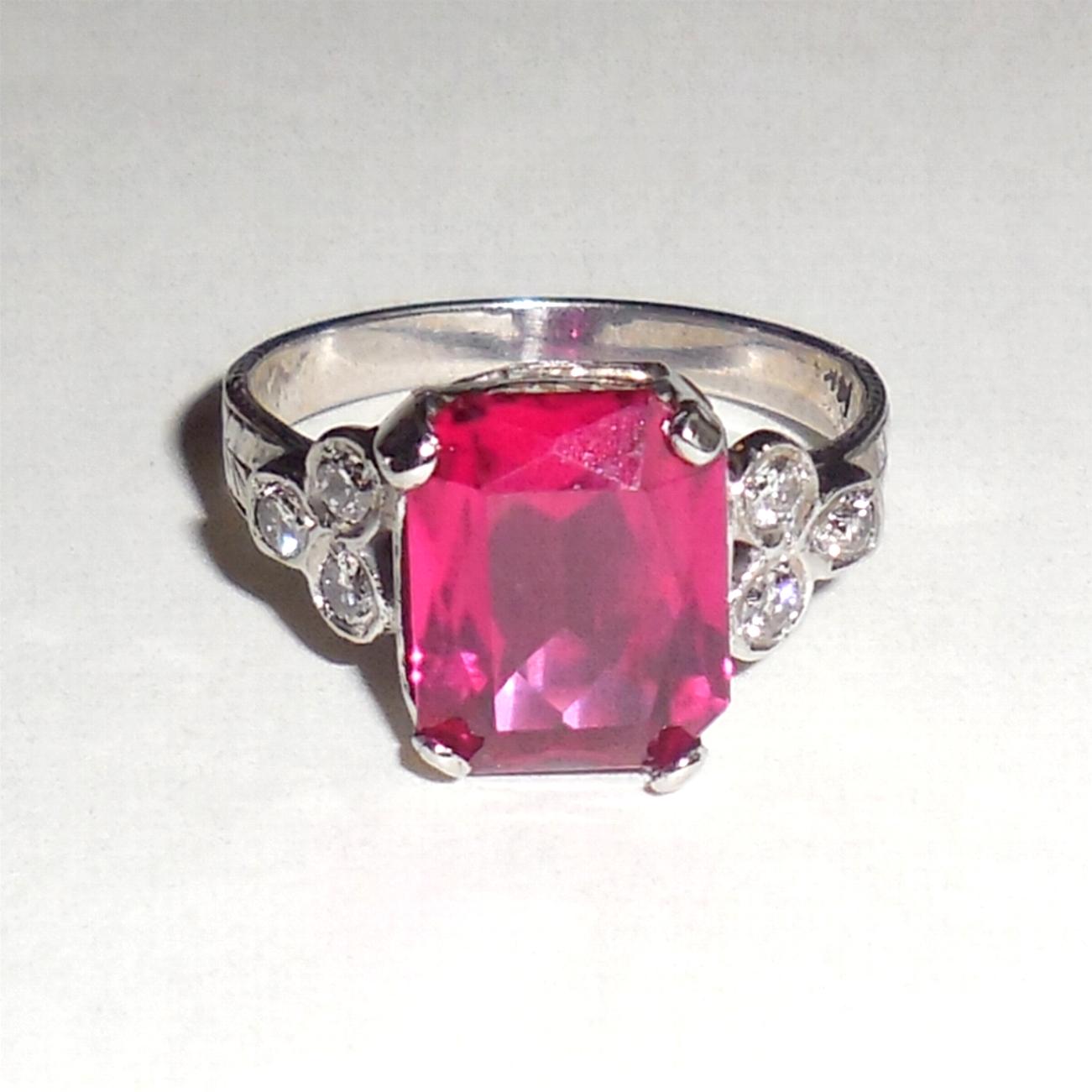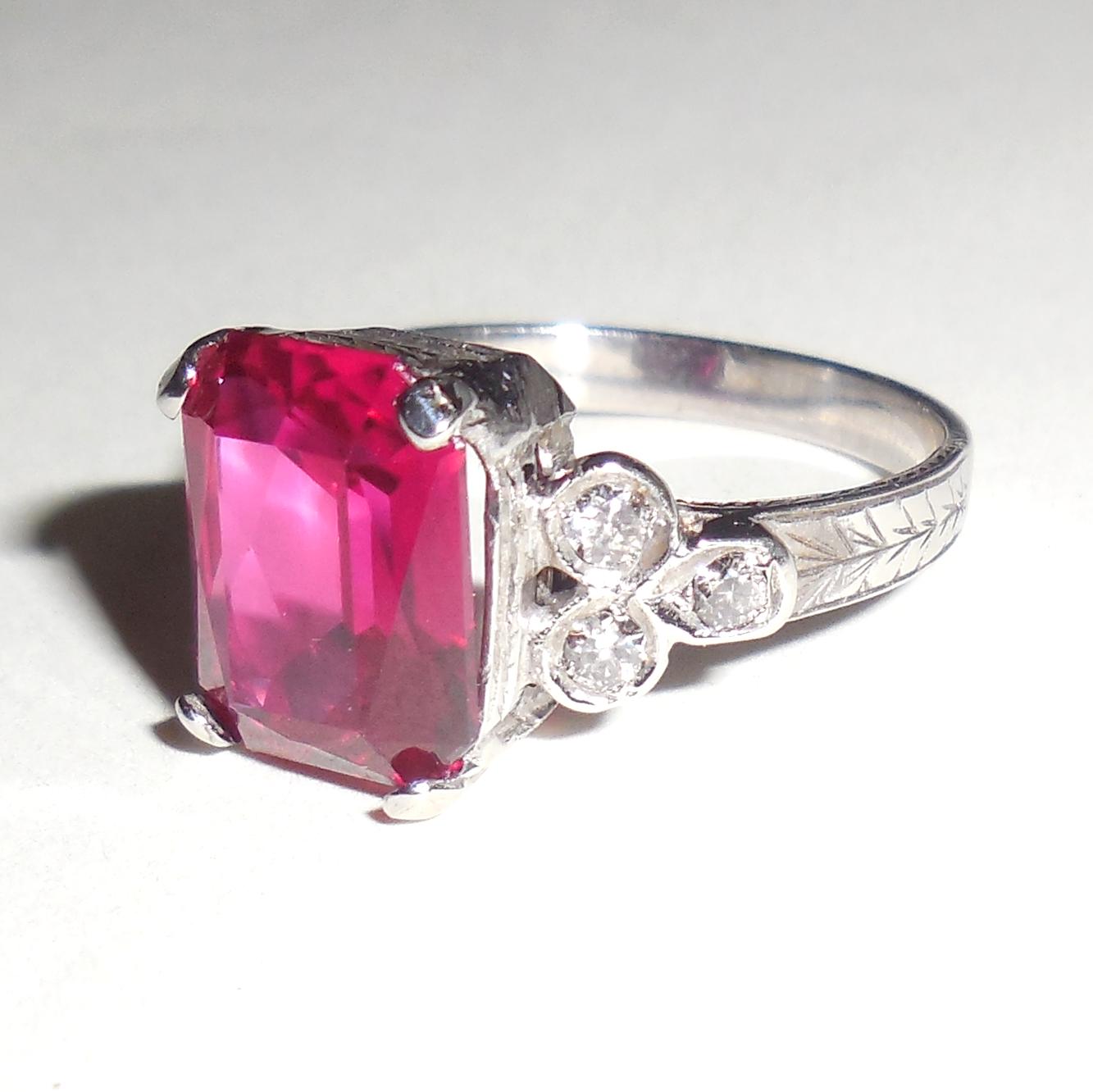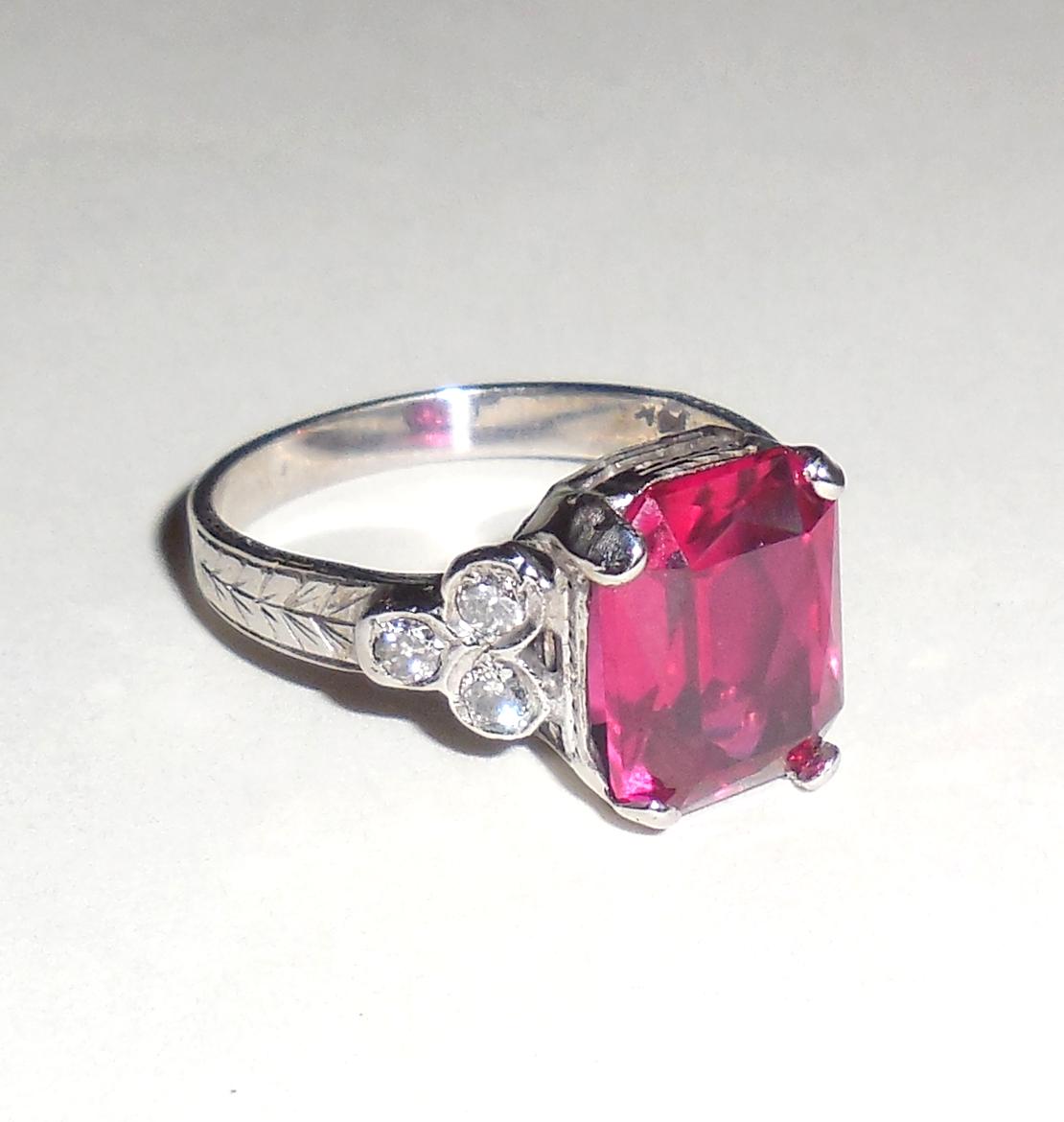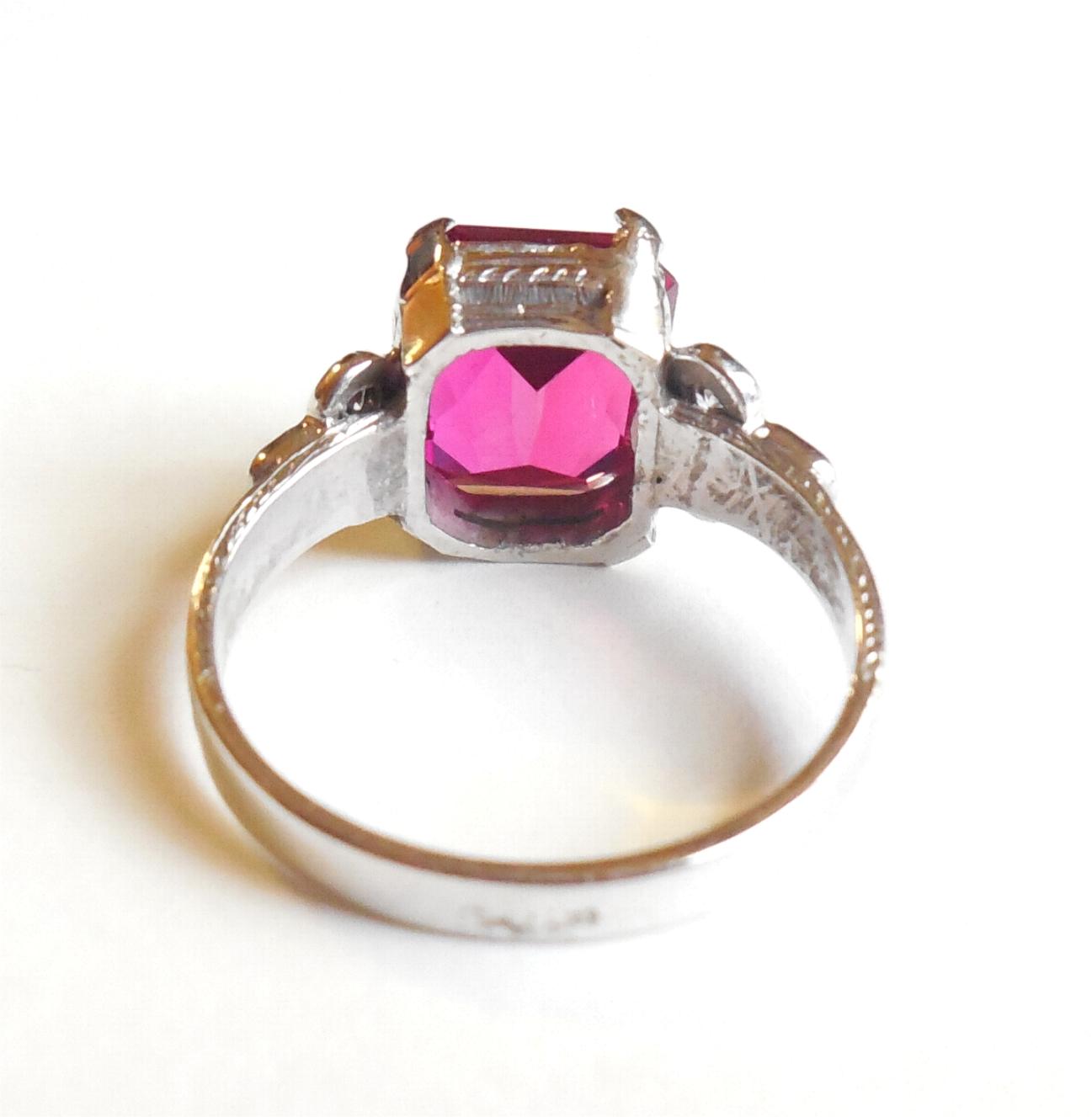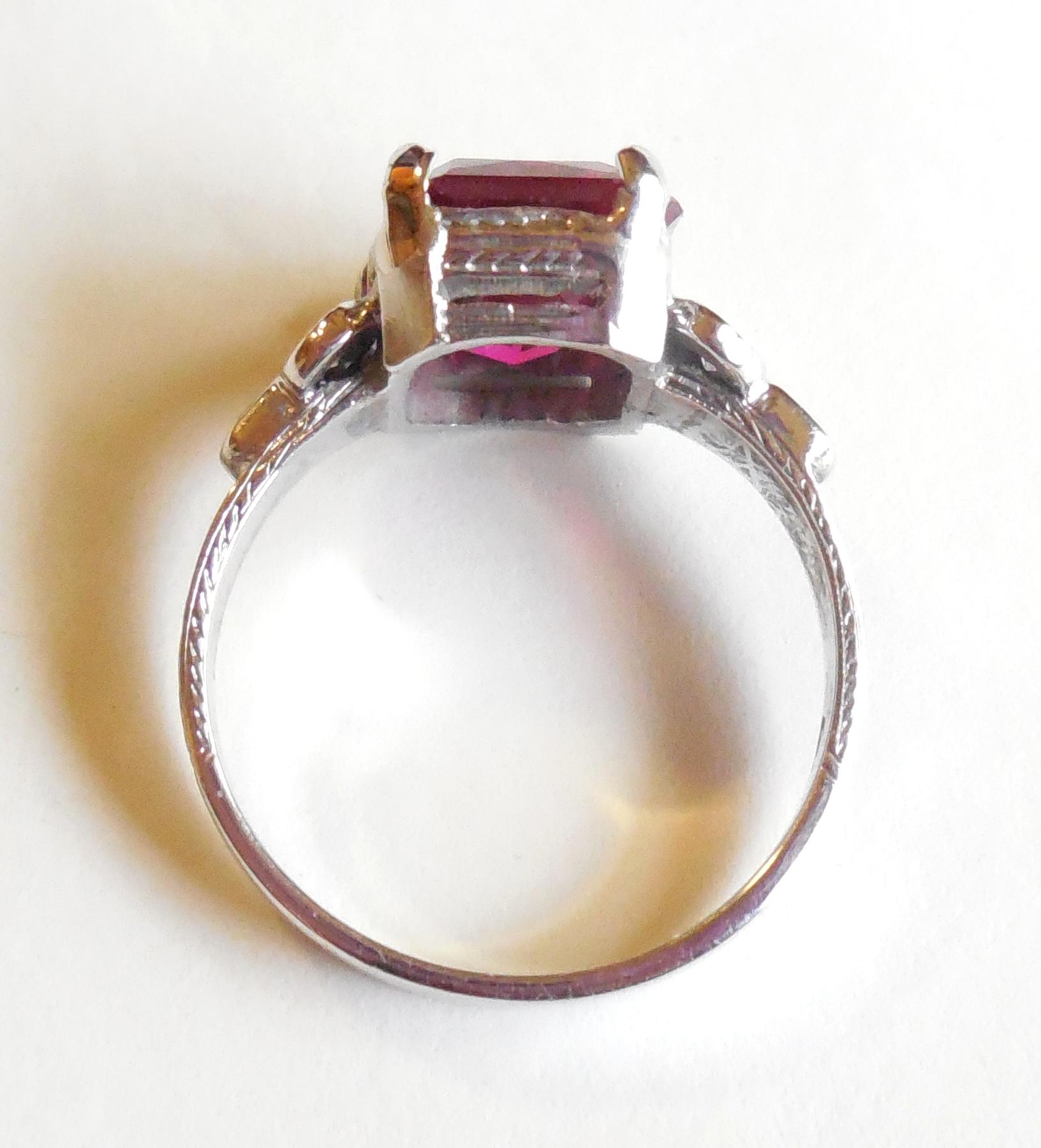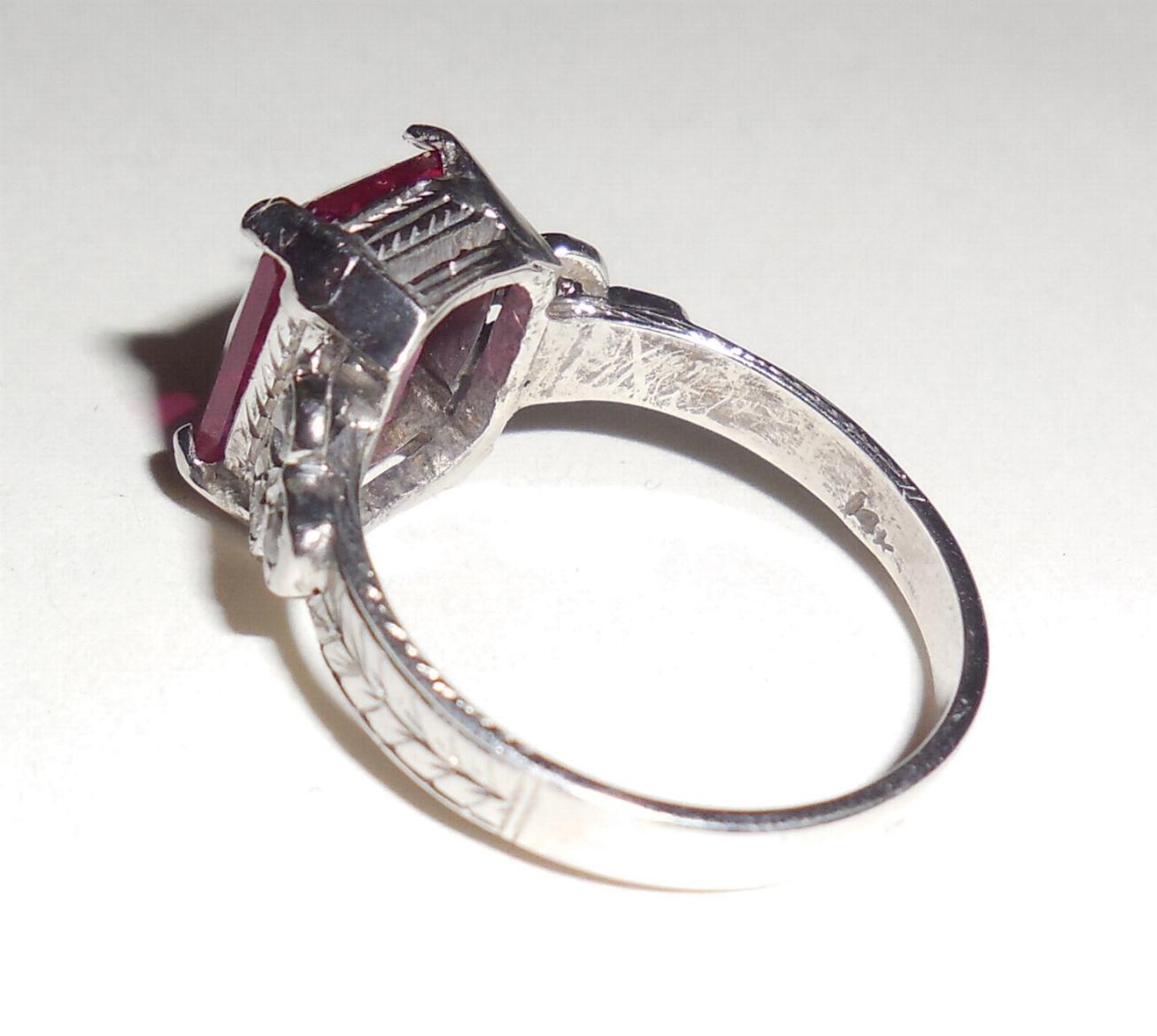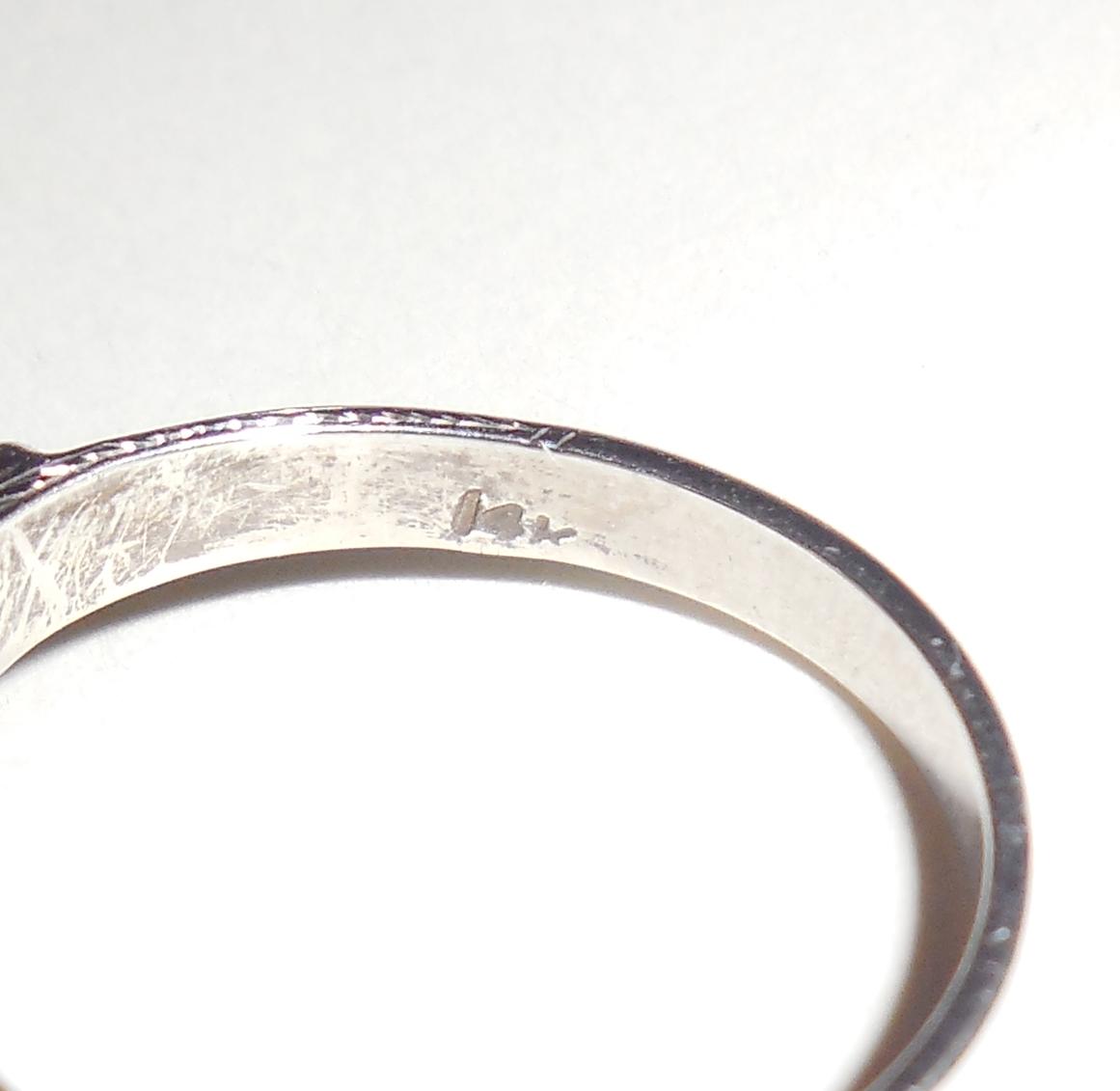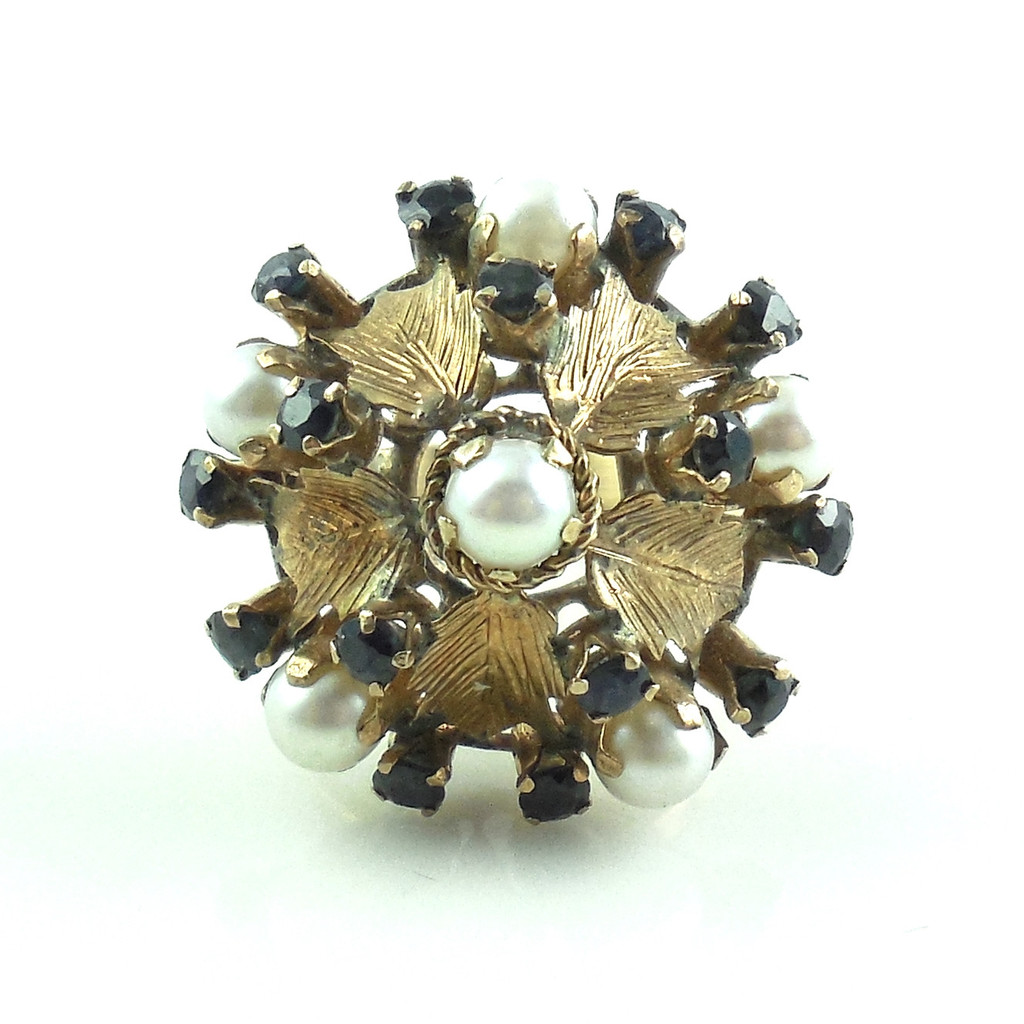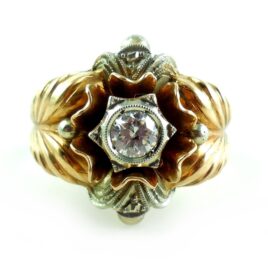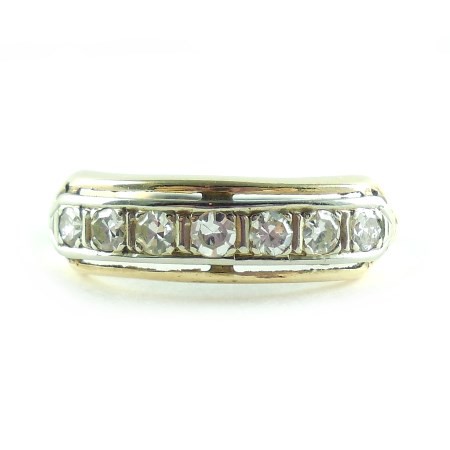Description
Art Deco 14K White Gold Diamond Synthetic Ruby Ring 5.75 size. This ring is being sold for its gorgeous Art Deco big fancy basket mount setting and its original, natural mined diamonds. The center stone is an old synthetic ruby that is set securely and looks beautiful but has a little abrasion on one facet and is a little off kilter in the setting. This is not eye obvious on the finger when worn. Only seen with a loupe. The band is marked 14K and is also jeweler tested and Guaranteed to be solid 14K white gold. Not plated or filled.
Ring size is 5 3/4. Size of top is a hair less than 10mm by 8mm. Height off the finger line is just about 1/4″ tall from the top of the ruby to the bottom of the mounting. Weight is 3.8 grams. Total carat diamond weight is approximately .15 carat.
The ruby has beautiful, deep, rich, red color with lots of glow and flash. The small diamond accents are bezel set, bright, white, sparkly and noticeable. The front and back have a tiny, intricate, 1930s Art Deco deep engraved arrow pattern which matches the engraved pattern on the sides of the band. The band is still very thick and solid measuring 2.5mm all the way at the bottom.
This is a beautiful, well made, early 1930s Art Deco 14K White Gold Diamond Synthetic Ruby Ring 5.75 ring for your collection. In solid 14K white gold it has a beautiful, chunky, showy, period setting that you can’t find today. Either wear it the way it is or easily replace the ruby with another synthetic of your choosing!!
Antique Synthetic Ruby History 1800s:
The synthetic rubies and sapphires, so prevalant in the 1920’s have a long history of creation.
1880, ruby and sapphire was discovered. However, in 1801, Robert Hare invented the oxyhydrogen gas blowpipe and the thought of producing synthetic ruby and sapphire was in the beginning phase of thought.
1817, Guy-Lassac realized that heating ammonium alum would produce aluminum oxide and the actual process of synthesizing corundum started.
1837, experiments began to synthesize corundum with Gauding and Fremy. They had no success and Fremy gave up in 1870.
1873, Auguste Verneuil with Fremy as his assistant at the time, in Paris at the Museum of Natural History, began to work together to synthesize corundum.
1876, after many experiments, ruby synthesis was understood and repeatable although it was not understood how sapphire, called, “bug juice” synthesis took place. The blue corundum color that was created was not a fine blue color and the process could not be repeated.
1886, Verneuil, a gem expert and Fremy worked together with Jannettez while they were still at the Paris Museum of Natural History. Verneuil came to realize that fusing powdered alumina and chromium with the oxygen hydrogen torch made synthetic corundum.
At some point between 1886 and 1892, Verneuil discovered flame fusion. Later he realized that using different elements would create other synthetic gemstones.
1894, Fremy died. In 1902, Vernueil found that fusing powdered alumina and chromium with the oxygen hydrogen torch at 2000 degrees Celsius made small particles of synthetic ruby.
Synthetic Ruby History 1900s:
1902, he announces that he is capable of creating synthetic ruby in a large enough size to use in jewelry.
1909, Vernueil realized that synthetic sapphires could be created with the addition of iron and titanium and in 1911, he and his employer, the Heller Company, were given two patents for this discovery.
1940, Union Carbide used this same method to create the “Linde Star” sapphire.
1959, Carroll Chatham, discovered the flux melt procedure to produce culture grown rubies, different than synthetic rubies.
1968, there is still question in the mineralogy world as to the chemistry of blue sapphire.
Between 1980-1993, several companies grew rubies using the flux grow method. Later the float zone method for synthetic corundum was used.
